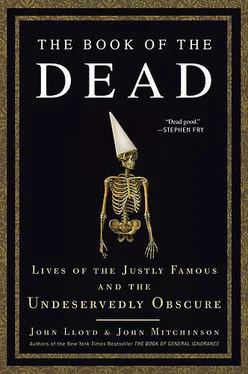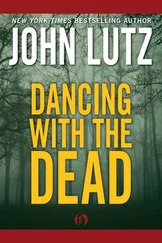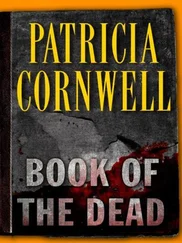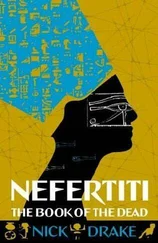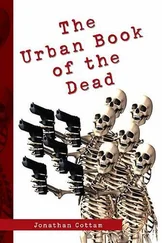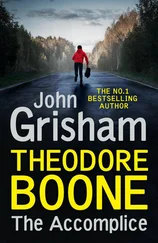One of the patterns that links the group of lives in this chapter is how few of them went on to have children of their own. Leonardo and Newton were gay; Heaviside likely died a virgin. Freud did have six children, despite disliking sex, but was only really close—arguably too close—to his youngest, Anna. It is interesting to speculate what Byron would have been like as a father. Against the odds, Annabella did bear him a daughter, Augusta Ada Byron King, Countess of Lovelace, generally known as Ada Lovelace(1815–52), but he saw her only once, fleetingly. Thereafter, her mother did everything she could to protect the girl from the legacy of her father’s memory.
Annabella, after her divorce, became a cold and domineering control freak. She delegated the upbringing of her child to three female staff members, whom Lovelace later called the Three Furies. They were spies as well as teachers: Lovelace was allowed no freedom of thought or action and was brought up on an unvarying diet of logic, mathematics, and science but “ not and never” poetry. She was twenty before she even saw a portrait of her father.
The repressive parental regime backfired in an interesting way. Lovelace fulfilled her mother’s hopes by developing exceptional gifts as a mathematician, but she also proved herself her father’s daughter by bringing a poetic imagination to bear on mathematical problems. At thirteen, she was doing Leonardo-like calculations for a flying machine. By seventeen she had survived a debilitating bout of measles and run the full gamut of teenage rebellion from migraines and dramatic weight loss to an attempted elopement. She entered society, keen on both dancing and intelligent conversation. As one of the few women at the time who could talk passionately about algebra, she soon had a group of admirers that included the most eminent scientists of the day.
One of these was the mathematician and engineer Charles Babbage, who was then trying to fund his difference engine, an 8-foot-high, 15-ton, 25,000-part mechanical calculator that he had hoped would render obsolete the notoriously inaccurate books of tables on which the whole financial system depended. The reason such tables were unreliable was that they were compiled by people, known as computers. (The first use of the word computer to mean any kind of calculating machine wasn’t until 1897, a quarter of a century after Babbage’s death.) Babbage failed to get his difference engine built, but he was very taken with Lovelace, and over the next few years he shared with her his plans for an even more ambitious project: an analytical engine, a larger, steam-driven calculator that could be programmed by adapting the punched cards recently used to automate French silk looms.
Babbage could see Lovelace’s money and connections would be helpful, but he couldn’t have anticipated how fully she would understand the machine’s potential. Despite being married with three children under eight, she offered to translate a description of the engine produced by the Italian philosopher Luigi Menabrea. Her work so impressed Babbage that he asked for her notes. They turned out to be three times the length of the original text. Published together, the book became an instant bestseller. It was, after all, by Byron’s daughter on a subject women weren’t supposed to understand. It is also a key text in the history of computing. Not only had Lovelace produced the very first computer program—a plan to get the machine to produce the complex sequence known as Bernoulli numbers—she also allowed her imagination free rein, predicting that in the future such an engine might be used to compose music and reproduce graphics and become an invaluable tool for science, commerce, and the arts. More even than Babbage himself, Ada Lovelace saw the awesome potential of what was one day to be known as the computer. In 1979, the U.S. Defense Department named their software language Ada in her honor, and her portrait is on the holographic stickers Microsoft uses to authenticate its products.
Over the next decade, Babbage again tried and failed to get his engine built. Lovelace had other priorities. Because her social status was enhanced by her success, she was busy living up to her Byronic inheritance. Dosed on laudanum or cannabis to dull the pain of a slow-growing cancer, she fell out with her mother and her husband by plunging into a series of intense relationships. She had a brief affair with Dickens and then fell for John Crosse, a professional gambler who inspired her to devise a mathematical system to beat the bookies. There is no record of whether it worked, but her daughter Anne did go on to found the Crabbet stud, from which almost all the world’s purebred Arabian horses now claim descent. Lovelace died at thirty-six, exactly the same age as Byron himself, and for all her mother’s attempts to keep them apart, she was buried next to him.
Lovelace’s story is an interesting variant on the absent-father scenario. Whether consciously or not, she established some kind of harmonic resonance with his memory during her short life, no doubt encouraged by her mother’s hysterical attempts to suppress it. Who knows how the father-daughter bond might have evolved if he had lived? Byron’s life and relationships were notoriously messy, full of betrayal and recrimination. Her story reminds us that sometimes a dead father, particularly an iconic one, might be more useful than a living one.

Hans, the father of Hans Christian Andersen(1805–75), died when his son was eleven, but by then the die was already cast. The Danish storyteller responsible for some of the most popular tales ever told endured a life of misery that bordered on the operatic. He was born in an Odense slum, the son of a cobbler and a washerwoman (possibly the only thing he had in common with Stalin). The family lived in a one-room house, and even before his father’s death, the young Hans had been subjected to enough trauma to fill a lifetime of therapy. Several biographers have suggested he may have suffered sexual abuse as a boy; in Andersen’s mostly autobiographical first novel, The Improvisatore , a man called Federico lures a young boy into a cave—and an early teacher called Fedder Carstens, whom Andersen claimed was “fond of me, gave me cakes and flowers and patted me on the cheeks,” mysteriously left town within a year of Andersen’s arrival at the school. As an adult, Andersen had a severe dislike of underground places.
They were a warm family, but his father became obsessed with the idea let slip by his grandmother that the family had once been rich and possibly even royal. This made an impression on the young Hans and fueled his sense of being different from the other children in his neighborhood. As soon as his father died, he was forced to work to support himself. It was a dismal experience. While helping his grandmother at a hospital for the insane, he looked through a crack in a door and saw a naked woman in a room singing to herself. The woman noticed him and threw herself at the door in a murderous rage; the little trapdoor through which she received her food sprang open and she glared at him, her fingers scrabbling at his clothes. When an attendant at last arrived, Andersen was screaming in terror, “half-dead with fear.”
His experience in a clothing mill was no better. His appearance was so effeminate that a group of his coworkers forced him to pull his trousers down in front of the rest of the workforce to see if he was a girl. Later, he signed up as a carpenter’s apprentice, but on his first day at work, the previous episode still fresh in his mind, he could do nothing but stand trembling, blushing, and upset. The other apprentices noticed his distress and taunted him until he fled.
Читать дальше
